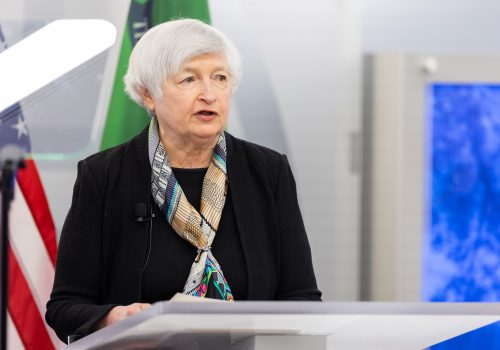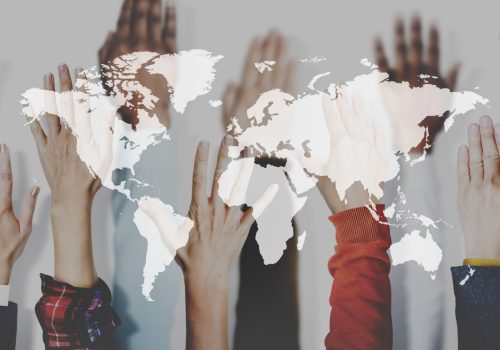The global slowdown: Why Sub-Saharan Africa is so important
The World Bank assigns income level classification to countries based on their gross national income (GNI) per capita. This can be influenced by inflation, economic growth, exchange rate, and population growth. In 1990, 51 countries belonged to the low-income group. By 2020, only 25 countries belonged to this category (Figure 1). This decline has meant that poverty rates, measured at $3.20 PPP per day, have also decreased from more than 56% in 1990 to around 23% in 2020 (Figure 2). Although these great achievements are a cause for celebration in the global community, a closer look at regional differences paints a bleak picture for Sub-Saharan Africa (Table 1). While 11 Sub-Saharan African countries were able to move from the low-income category to lower and upper-middle income groups in the past three decades, 21 out of 25 countries in the low-income group in 2020 were Sub-Saharan African economies (Figure 3). This is also reflected in poverty rates of the region. The region continues to suffer from high poverty rates: nearly ⅔ of the region’s population live on $3.20 (PPP) a day, down from nearly 75% of the population in 1990 (Figure 2).
It is estimated that the COVID-19 pandemic will increase poverty rates by around 10% globally, with most of the increase taking place in the Sub-Saharan Africa region. Though in the second half of 2021 the region surpassed its estimated growth rate of 3.7%, reaching 4.5%, the recent increases in global energy and food prices present new challenges to Sub- Saharan Africa’s economic recovery. Several lower middle-income economies in Sub-Saharan Africa could, despite an increased growth rate, move back to low-income status by the end of 2022, undoing three decades of slow and hard progress.
The global community, with the leadership of the IMF and the World Bank, needs to focus on this region. In addition to lifting hundreds of millions of people out of poverty in this region, sustained and inclusive growth over the next two decades in Sub-Saharan Africa could contribute to the growth in the global economy. The reason is simple. While the population in high-income and upper middle-income economies is aging rapidly (Figure 4), Sub-Saharan Africa is home to one of the world’s youngest population structure. Nearly 70% and 42% of the region’s population are under 30 and 15 years old, respectively. Nearly a quarter of world’s population under the age of 15 reside in Sub-Saharan African economies (Table 2).
Increased income in these economies will enable their young population to consume more as they grow older and establish their own careers and families. This will increase the demand for consumer, as well as capital goods in the global economy for at least the next five decades, helping offset the downward pressure on global aggregate demand due to rapidly aging populations in high-income and upper middle-income economies. In other words, economic development in low-income and lower-middle income economies of Sub-Saharan Africa (as well as in poorer economies of South Asia and Southeast Asia, where the world’s youngest population reside) reduces the risk of a prolonged global downturn in the coming decades.
Over the past thirty years, the World Bank and IMF have heavily intervened in Latin America and East Asia and the Pacific, providing billions of dollars to ensure financial stability and development. Countries in these regions have been able to shift into higher income categories, but for low income countries in other parts of the world this remains a distant dream. Future programs for Sub-Saharan Africa and South Asia will need to foster economic recovery from the COVID-19 pandemic and the severe economic shock caused by Russia’s invasion of Ukraine, without compounding prevailing debt issues. Looking ahead, the Bretton Woods Institutions will need to focus on the Sub-Saharan African and South Asian regions to promote sustainable and inclusive growth as new challenges to global economic stability and prosperity arise.
Amin Mohseni-Cheraghlou is a consultant with the GeoEconomics Center and an assistant professor of Economics at the American University in Washington, DC. @AMohseniC
Naomi Aladekoba is a consultant with the GeoEconomics Center focusing on Sub-Saharan Africa, Chinese foreign policy, and international development. @NAladekoba
Related reading

At the intersection of economics, finance, and foreign policy, the GeoEconomics Center is a translation hub with the goal of helping shape a better global economic future.


